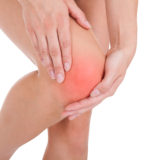When someone mentions inflammation, many people generally think of the painful part of arthritis. However, health practitioners understand that inflammation is also a component of many types of chronic diseases. As recently proven in the lab, fatigue appears to be one of the many problems that inflammation can cause. Approaches for combating inflammation and fatigue vary widely. Our drug dependent society consistently looks toward pill popping to cure that which ails them. However, in the case of inflammation and fatigue, one of the most effective prescriptions can be found in any well-stocked kitchen.
About Inflammation
A function of the immune system, inflammation occurs when the body’s white blood cells and chemicals protect us from infection and foreign substances such as bacteria and viruses. While the inflammatory response is designed to protect, it can also cause damage to the body’s tissues.
Certain health conditions cause the body’s immune system to inappropriately trigger an inflammatory response when there are no foreign substances to fight off. Collectively referred to as autoimmune diseases, this growing problem causes the body’s normally protective immune system to damage its own tissues.
Depending on the inflamed location, symptoms can vary. The release of inflammatory chemicals typically increases local blood flow and may result in redness, warmth, swelling and pain. However, when an autoimmune disorder causes systemic inflammation, symptoms can include:
- Fever
- Chills
- Fatigue
- Headaches
- Loss of appetite
- Muscle stiffness
As you can see, fatigue is an indicator of inflammation.
Study Showing Link
Although the connection between fatigue and inflammation is apparent in clinical practice, there is still speculation as to how they are linked. However, a fascinating animal study has uncovered a key mechanism explaining why inflammation causes fatigue.
Although the brain is usually isolated from the immune system, a recent study suggests that certain behavioral changes suffered by those with chronic inflammatory diseases are caused by the infiltration of immune cells into the brain. As published in the February 2009 edition of The Journal of Neuroscience, Canadian researchers documented how inflammation outside of the nervous system enters the brain. There is now documentation that the following chain of events occurs with inflammation:
- An inflammatory messenger (TNFa) crosses into the central nervous system.
- TNFa activates glial cells within the nervous system.
- In response to this activation, glial cells send out a message attracting immune cells into the brain (where they should not be).
- Immune cells in the brain initiate fatigue.
The researchers found that by blocking TNFa’s activation of glial cells in the brain, the inflammation persisted while fatigue was prevented. This new research suggests that inflammation is the link between certain chronic diseases and fatigue.
Helping Inflammation
The inflammatory response is an integral part of how the body protects itself. Without this function, a pathogen or physical injury could become a major health crisis. As such, it is only the inflammation resulting from an autoimmune condition that must be tempered.
To combat inflammation, the pharmaceutical companies are continuously improving their selection of anti-inflammatory drugs. However, adopting a nutritional program containing natural anti-inflammatory components is without the side effects of manufactured medicines.
As our understanding of how inflammation contributes to chronic health problems grows, anti-inflammatory diets are increasingly popular. The basics of an anti-inflammatory diet include:
- Consuming cold water fish, walnuts or fish oil supplements for their omega-3 fatty acid content; an abundant variety of fresh fruit and vegetables; whole grains such as brown rice; lean protein and protein from plant sources.
- Restricting saturated and trans fats; high glycemic carbohydrates like white bread; red meat; full-fat dairy foods; and refined and processed foods.
- Using anti-inflammatory herbs and spices such as ginger, turmeric, black pepper, cinnamon, basil, rosemary, cardamom, cilantro, garlic and parsley.
Long known by clinicians yet recently proven in the lab, excess inflammation can lead to fatigue. Therefore, reducing inflammation can stop the physiological mechanism that turns energy production off. While certain health conditions definitely warrant the use of pharmaceuticals, an anti-inflammatory diet can help restore energy levels. By reducing foods that fan inflammation and emphasizing cuisine that discourages it, anyone battling fatigue can use his or her kitchen as the most precious healing resource.




